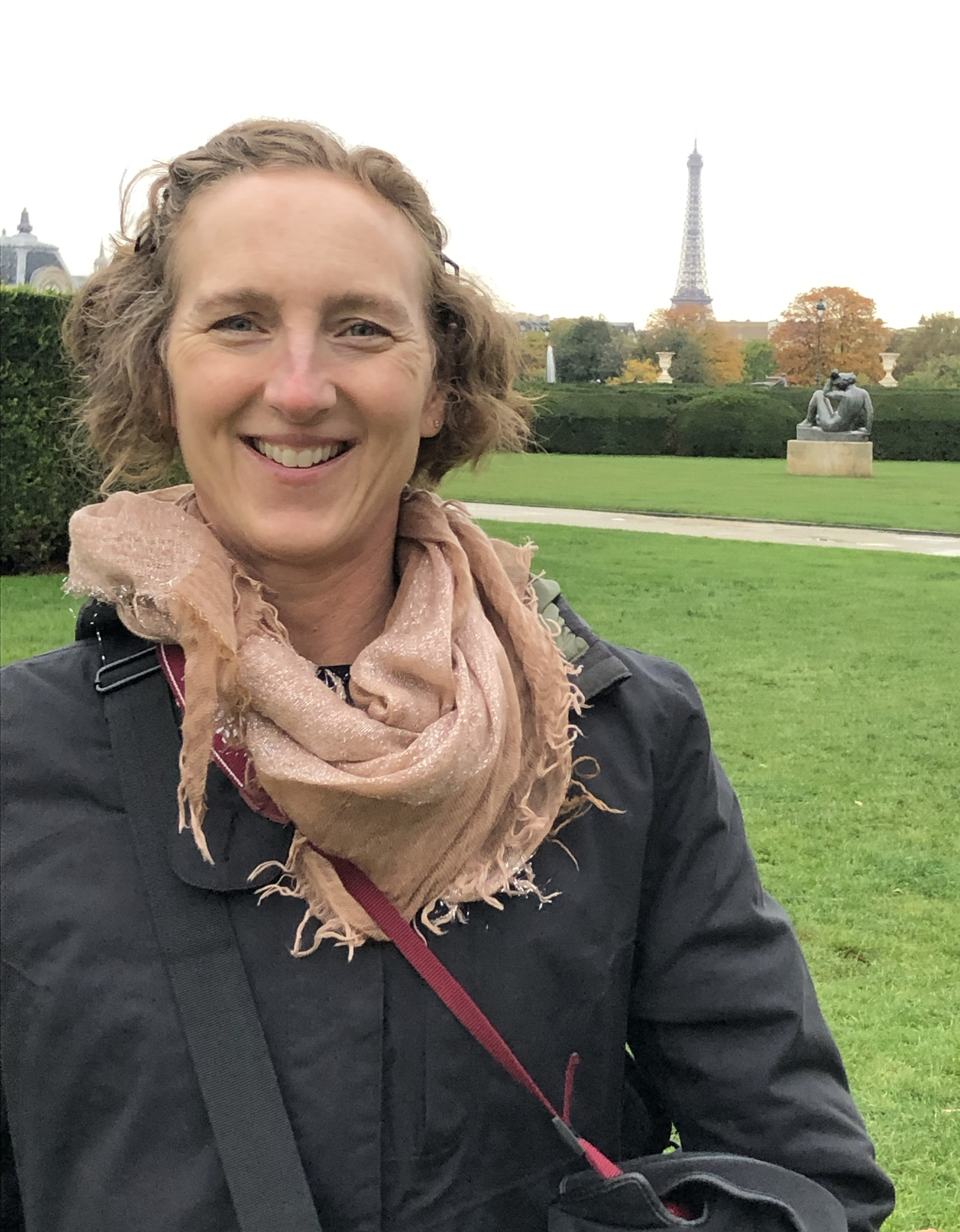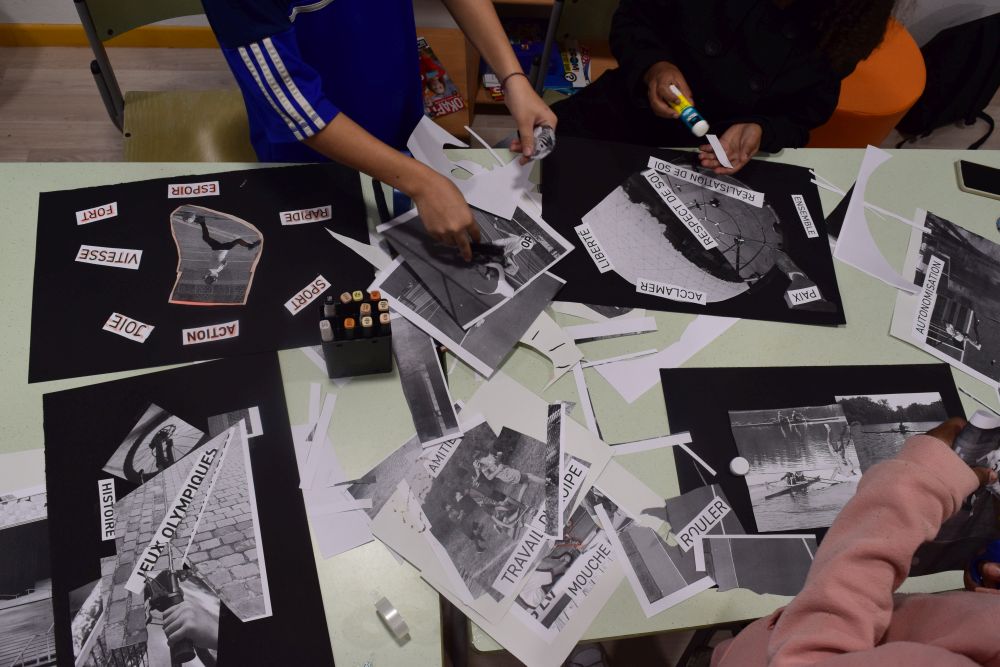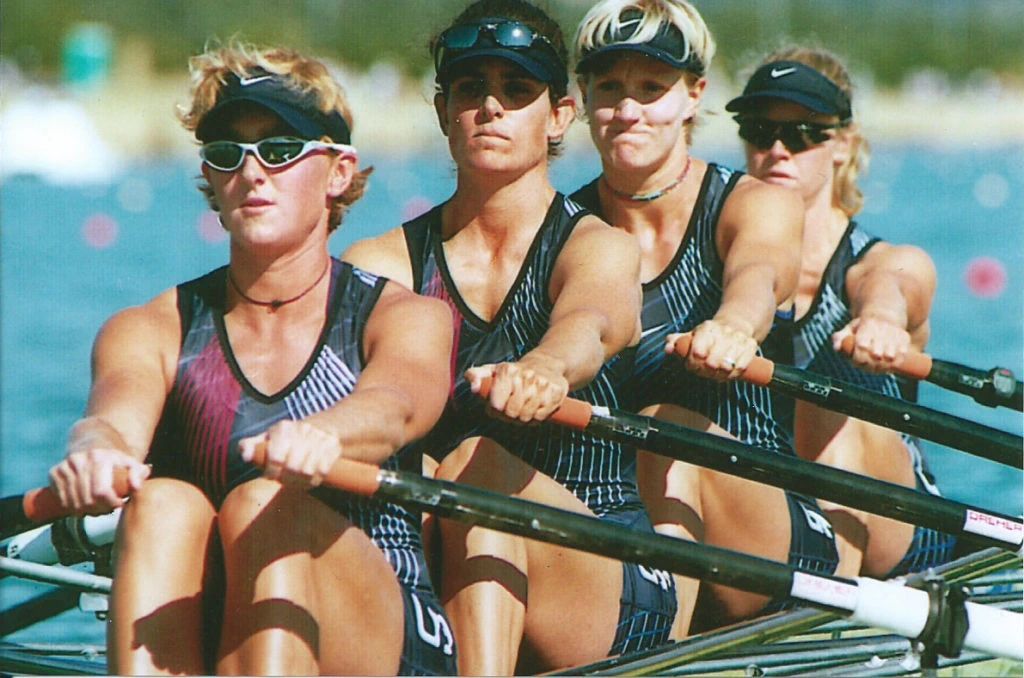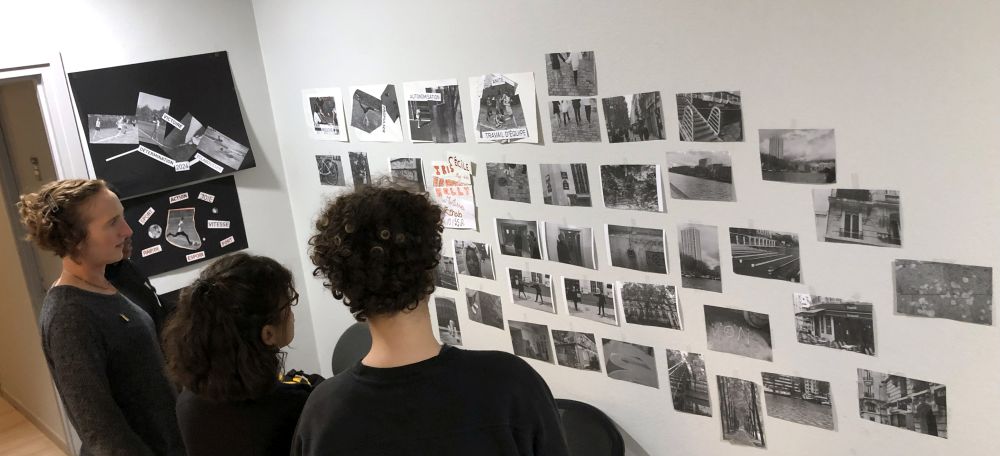Sharing Olympic Values Through the Arts
- Kelly Salchow MacArthur, MFA
- Professor, Department of Art, Art History, and Design
- College of Arts and Letters
Project Overview
- As part of the Olympian Artists Program, two-time Olympian Kelly Salchow MacArthur, an MSU professor of graphic design, served as an Artist-in-Residence at community centers for at-risk children in Paris.
- Salchow MacArthur guided two groups of children (ages 6-11 and 12 and up) in a collage workshop, where they combined words and images to convey Olympic values.
Products/Outcomes
- The children displayed their collages at vernissages (gallery openings) at the community centers where they live.
- The children had an opportunity to talk about Olympic values and how they can draw on them in their own lives as their city prepares to host the Games beginning July 26.
Community Partners
- Community centers in Paris
- Olympic Foundation for Culture and Heritage
- Olympic Museum
- International Olympic Committee
Form(s) of Engagement
- Community-Engaged Creative Activity

Kelly Salchow MacArthur
Scissors and glue sticks, words and images.
Using these simple tools and elements, MSU Professor Kelly Salchow MacArthur shared her passion for art and sport with children in Paris ahead of the 2024 Summer Olympic games.
The two-time Olympian visited two children’s centers October 23-28, 2023, as part of the Olympian Artists Program, run through the Olympic Museum and the Olympic Foundation for Culture and Heritage. She guided two groups of at-risk children, ages 6-11 and 12 and up, in a collage workshop not unlike what she enacts with her students as a professor of graphic design.
“We start with a word and an image, which have individual meanings, but when we combine them, we create a new message for the viewer,” said Salchow MacArthur. “It’s a very accessible, engaging, low-tech art and design process.”
The work centered around the children’s perspectives and the values that have guided Salchow MacArthur’s life on the water as a top U.S. rower, in the classroom and studio as a graphic designer, and in the broader community as a fierce advocate for the environment.
“We talked about Olympic values, which can truly provide life lessons and guidance in terms of which choices we make in life. Self-confidence, resilience, determination, teamwork, self-actualization, fair play, long-range goals, etc. can guide us in pursuing our strengths to the point of reaching our potential. And of course, this may include the thrill of victory and the agony of defeat,” Salchow MacArthur said.
“These are universal concepts that can bridge cultures and diverse groups,” she added.

Children use scissors, glue sticks—and imagination—to create mixed-media collages.
A ‘Community-Centric Approach’
In 2020, Salchow MacArthur served as an Artist-in Residence for the Tokyo Olympics. She designed five Noren curtains visualizing Olympic values that hung in the Nihonbashi underground passageway in downtown Tokyo. She was appointed to the International Olympic Committee (IOC) Culture and Olympic Heritage Commission in 2022.
This year, for the first time, Olympian and Paralympian artists were invited to apply to participate in a community outreach project. “I was excited by this idea for many reasons, one of which being that this opportunity was in alignment with the outreach work I have done through MSU,” said Salchow MacArthur. “Outreach is a way to offer my skills, collaborate, and position myself in a place where I can learn from the community and remain engaged for the benefit of the public and my students.”
Salchow MacArthur, a member of the U.S. women’s rowing team in 2000 (Sydney, Australia) and 2004 (Athens, Greece), was one of five athletes selected to serve as Artists-in-Residence at community centers across Paris. “This initiative is a community-centric approach in close collaboration with the city of Paris to promote inclusivity and enhance access to meaningful encounters with Olympians and Paralympians among diverse populations and social groups,” said Angelita Teo, director of culture and heritage, in announcing the new partnership October 17, 2023, at 141st Session of the International Olympic Committee in Mumbai, India.

U.S. rower Kelly Salchow MacArthur (front) competed in the 2000 Olympics in Sydney, Australia.
Salchow MacArthur visited two centers that provide housing for children removed from their homes for their own safety. The other athlete-artists worked on art projects with elderly people, individuals experiencing homelessness, and adults facing physical and mental challenges. “Our aim is to offer hope and solidarity through the lens of creative expressions and the Olympic values,” Teo said.
Cutting, Pasting, and Conversation

To prepare for her visit, Salchow MacArthur brainstormed and printed out multiple sets of 25 words—like amitie (friendship), espoir (hope), and sante (health)—that convey Olympic values. She took 80 photos in Michigan of children in sport, in addition to sport objects and spaces (like balls, nets, and fields). Before the two-day workshops started, she captured dozens of additional images in the neighborhoods surrounding the centers.
To begin, Salchow MacArthur reminded the children that the summer Olympics would be coming to their city “and that they are all part of this special experience,” she added.
Then she took each group on a “photo safari” near their community center. “The children showed us their favorite places and where they found beauty,” she recalled. “They talked about their abilities, their confidence, and when they felt most themselves and their strongest.”
Those conversations became the basis for their collages. “I talked about some of the design concepts I share with my students,” said Salchow MacArthur. “About the formal and communicative combination of word and image...to create a new visual message. These were active days of cutting and taping, listening to music, forming friendships, and talking about our countries and cultures, sport and reaching our potential,” she said.
‘Sparks of Beauty’
On the third day, each group displayed their art at a vernissage (gallery opening) at the centers. The younger children described their work, which Salchow MacArthur had displayed low so that it would be at eye-level. “They were really intuitive—very intelligent and visually sensitive,” she said. For example, one boy combined an image of two people in a rowing shell with the word “teamwork”; a girl combined a photo of Salchow MacArthur’s daughter doing a backflip with the French word for equilibrium.
The teen group enjoyed using Salchow MacArthur’s camera to capture their own images. “I was able to share my captivation from an American perspective of Paris’ charm and allure, the landscape and streetscape they are surrounded by,” she recalled. She talked about framing the photograph, pulling attention to the periphery, and “recognizing the beauty of the everyday.”
For the children, Salchow MacArthur hoped the experience not only infused excitement and knowledge about the Olympics, but also provided a sense of calm amid the challenges they face and an awareness that there are “sparks of beauty” all around them.
“The connections I made with the children really were the most rewarding parts of the experience,” she said. “Spending time with them affected me. I wanted to share enthusiasm and support with them, and tried to bolster confidence where I could...talking about the possibility of dreams being actualized and recognizing that each person’s abilities are unique and should be cherished.”
The Art of Collaboration

Children who participated in Kelly Salchow MacArthur’s collage workshop displayed their work at vernissages (gallery openings) at community centers where they live.
For Salchow MacArthur, art and sport have been common threads throughout her life. Both of her parents taught graphic design, and her father founded the program at the University of Cincinnati.
She began rowing at age 14. As she progressed in the sport, her father’s influence would again come into play. “He would often say, ‘Treat every obstacle as an opportunity.’ This is such a wise mantra—whether in the context of athletics, career, academia, or life in a broad sense. There will always be difficulty and challenge. Success can be found when a person faces that difficulty and accepts the challenge.”
During the summer, Salchow MacArthur rows every other day on the Huron River near her Ann Arbor home. On the one hand, “it is an amazing feeling to skim across the surface of the water and feel one with nature.” On the other, dodging toxic PFAS foam is a reminder of the environmental threats facing Michigan and beyond.
In addition to her partnership with the Olympics, she has been a constant advocate for the environment. In 2019, for example, Salchow MacArthur received a Distinguished Partnership Award for Community-Engaged Service for her work with the River Raisin Institute in Monroe, Michigan. She helped community members develop a “green map,” which identified food deserts, fresh and local food sources, and green living practices.
Her community-based work in Monroe County and with the Olympian Artists Program flow naturally from her profession, Salchow MacArthur says. “Graphic design is inherently a public service discipline,” she said. “In professional practice, we are hired by clients to solve problems and to create and share visual messages. Graphic design is consistently collaborative and produced for the public.”
It’s been a thrill to return to the Olympics, 20 years after she competed in Athens, Greece. “This has strengthened and renewed my proud connection to the Olympic community,” she said. “The Olympian Artists Program is a very creative way to continue to support the Olympians and Paralympians and also leverage our experiences in a way that connects us with the global community beyond our roles as athletes.”
By engaging with the community, the IOC hopes to strengthen those connections. Said Teo, “We are delighted to be leaving what we hope will be a legacy that through the marriage of art and sport and by bringing people together in solidarity and in a spirit of friendship, respect, and excellence makes it clear the Olympic values are for everyone, every day, everywhere.”
- Written by Patricia Mish, University Outreach and Engagement
- Photographs courtesy of Kelly Salchow MacArthur